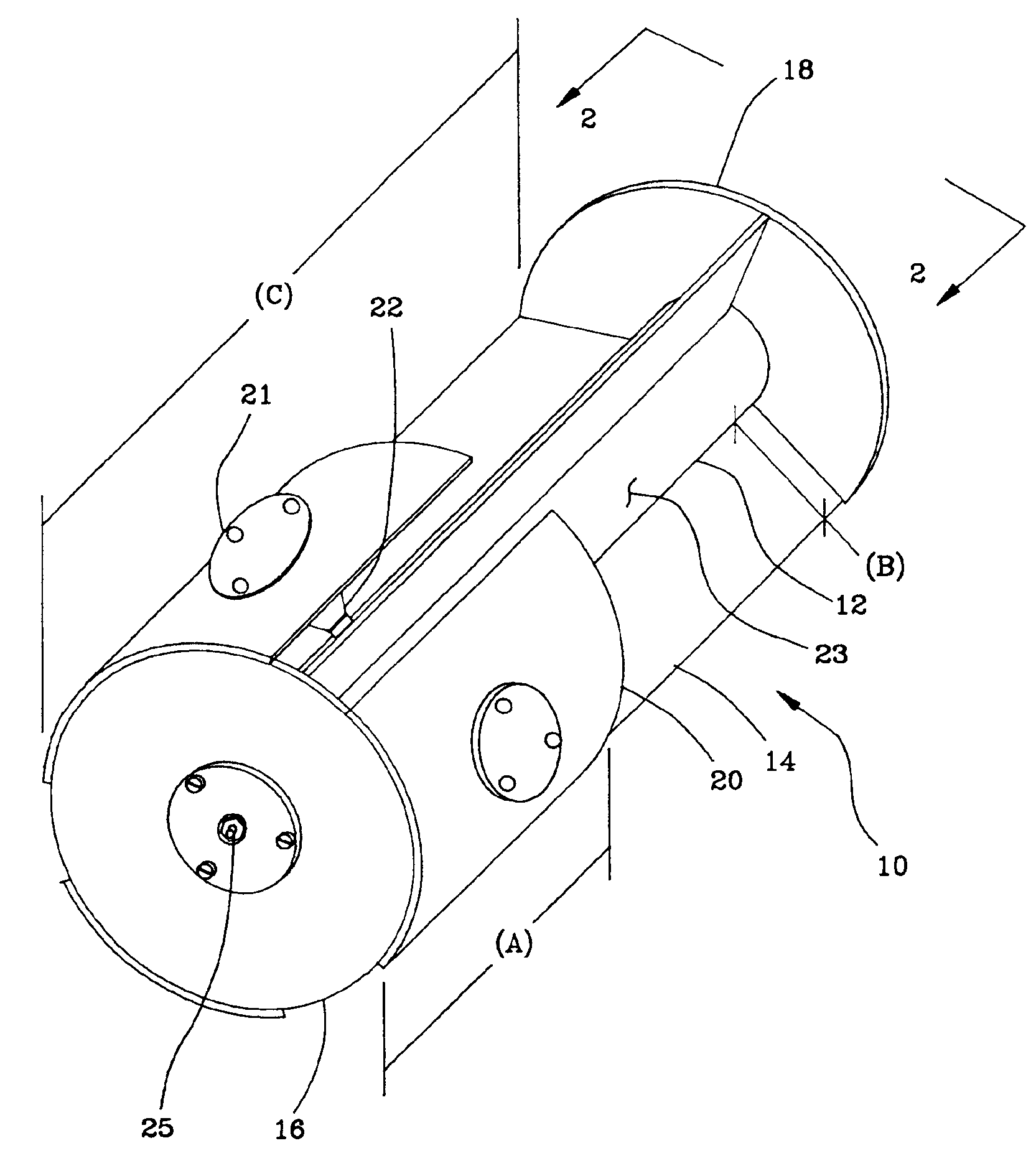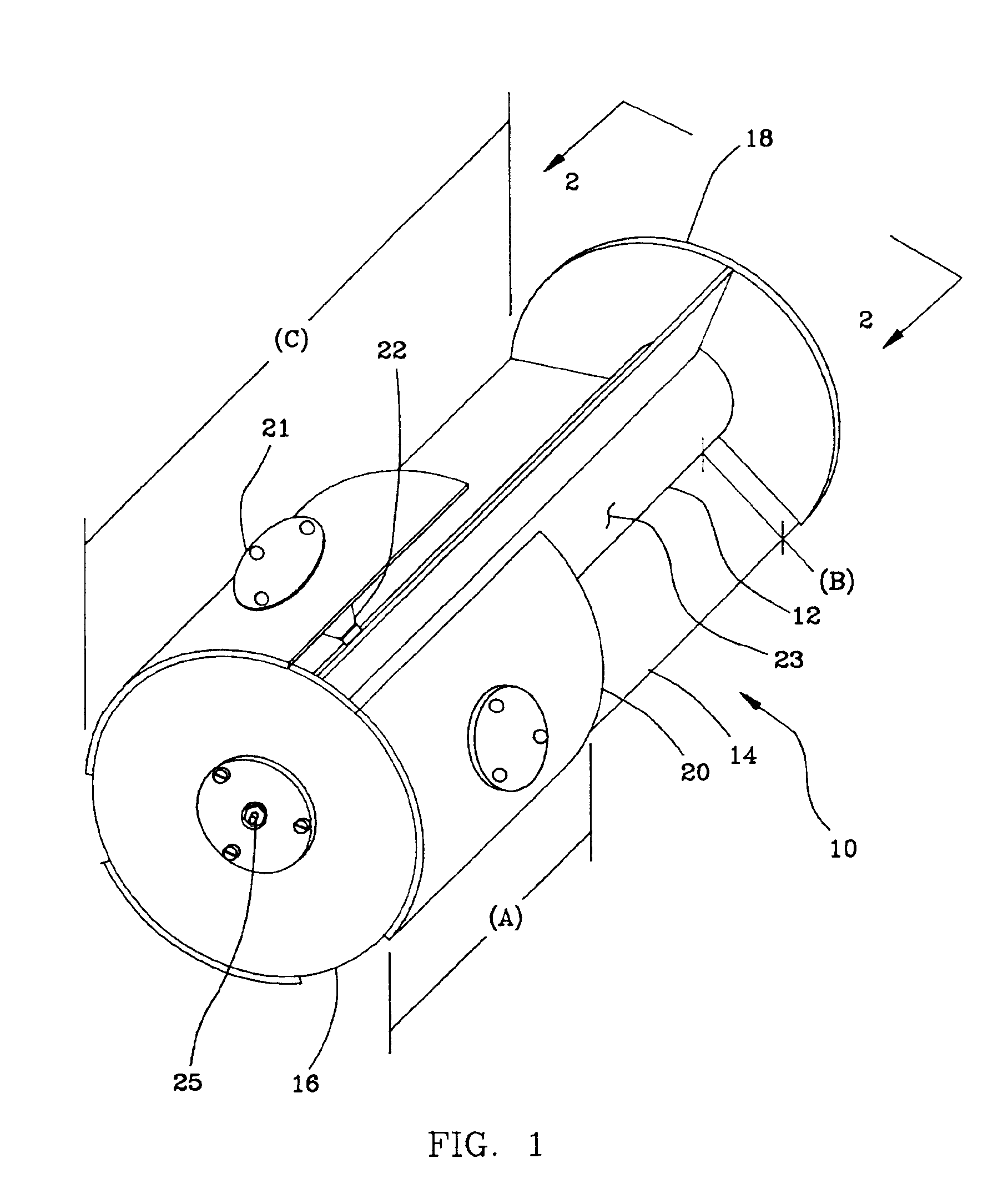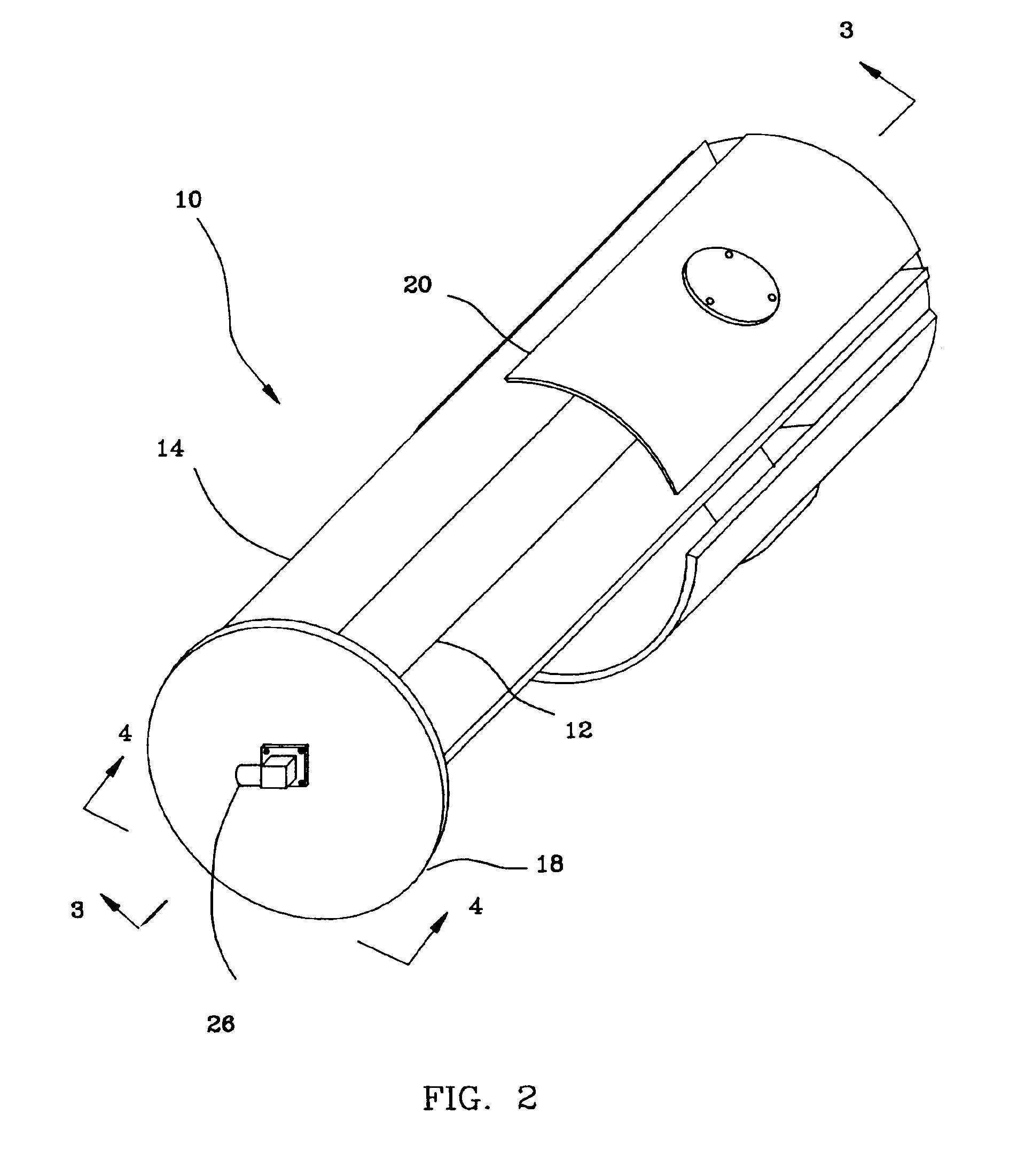Gravity-actuated submarine antenna
a gravity-actuated, submarine technology, applied in the direction of antennas, antenna details, antenna adaptation in movable bodies, etc., can solve the problems of affecting the covert operation of the submarine, affecting the use of surface antennas, and reducing the effectiveness of current bcas for transmission
- Summary
- Abstract
- Description
- Claims
- Application Information
AI Technical Summary
Benefits of technology
Problems solved by technology
Method used
Image
Examples
Embodiment Construction
Referring now to the drawings wherein like numerals refer to like elements throughout the several views, one sees that FIG. 1 depicts the gravity-actuated submarine antenna 10 of the present invention. The antenna 10 is preferably cast with a rigid thickness from aluminum with brass electrically conductive components attached. Other commonly acquired materials or methods known to those skilled in the art may be used in forming the antenna 10. Such a variant in antenna formation would be molding the antenna 10 from plastic and plating the antenna with a conductive material. Another non-exclusive variant in antenna formation would be molding the antenna 10 from conductive material.
The simplified structure of the antenna 10 generally comprises a cylindrical feed tube 12 with radially extending fins 14 and disk plates 16, 18 secured to ends of the feed tube 12 and the fins 14. A plurality of curved metal plates 20 spaced apart from the fins 14 and projecting from the end plate 16 partia...
PUM
 Login to View More
Login to View More Abstract
Description
Claims
Application Information
 Login to View More
Login to View More - R&D
- Intellectual Property
- Life Sciences
- Materials
- Tech Scout
- Unparalleled Data Quality
- Higher Quality Content
- 60% Fewer Hallucinations
Browse by: Latest US Patents, China's latest patents, Technical Efficacy Thesaurus, Application Domain, Technology Topic, Popular Technical Reports.
© 2025 PatSnap. All rights reserved.Legal|Privacy policy|Modern Slavery Act Transparency Statement|Sitemap|About US| Contact US: help@patsnap.com



